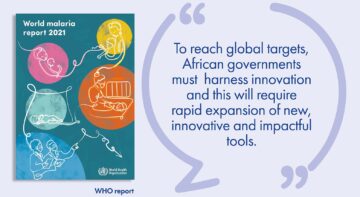Blogs

This is the first in a series of three blogs discussing the Kenya Health Knowledge Translation Platform (KTP). The follow-up blog will highlight lessons from existing KTPs for consideration in the establishment of the Kenya Health KTP. The final blog highlights how the Kenya Health KTP builds on recent efforts to improve evidence-informed decision-making in Kenya’s health sector.
Background
A Knowledge Translation Platform (KTP) brings together policymakers, researchers and other stakeholders, including the civil society, for evidence-informed deliberations on identified health priorities. It creates and nurtures links that draw the research and policy communities closer together to ultimately create cycles of policy-informed evidence and evidence-informed policy. The concept of the KTP was initiated and promoted by the World Health Organization beginning in 2005, resulting in numerous national and regional KTPs across the globe. By 2012, twelve countries in Africa either had a national KTP (Cameroon, Malawi, Nigeria, Uganda and Zambia) or were part of a regional KTP e.g. the Regional East African Community Health Policy Initiative (REACH-PI) comprising of Burundi, Kenya, Rwanda, Tanzania and Uganda, although only active for two years from 2006 to 2008.
On 1 March 2018, the Ministry of Health (MoH) convened a stakeholder meeting to discuss the establishment of the Kenya Health and Research Observatory (KHRO). The KHRO aims to promote evidence-informed decision-making (EIDM) in the health sector by improving access and use of research and health information. It is thought of as « a web-based portal designed to facilitate multi-stakeholder collaboration and partnership in accessing and using information for strengthening national health information systems, as well as serving as a repository of the best available information, and provide tools to strengthen monitoring of health status and trends ».
One of three platforms being proposed to be hosted on the KHRO is the Kenya Health Knowledge Translation Platform (KH-KTP), which will « consolidate all health research conducted on Kenya and facilitate discussions and translation of this research by key policy actors to enable its uptake in decision-making in the health sector ».
As part of the deliberation on what to consider when establishing a KTP, AFIDEP was invited to provide insights on the role of KTP in promoting EIDM in the Kenya health sector. What follows is my analysis of the model adopted by the Kenya Health KTP and its potential for success in the context of the evidence-base on KTPs in Cameroon (a);(b), Malawi, Nigeria, Uganda (a);(b) and Zambia.
Proposed structure/model of the Kenya KTP in relation to existing models
A KTP may take several different forms, each with their advantages and disadvantages. It may be a web-based entity or it may be located in a conventional office. Web-based KTPs rely on motivated users, which is difficult to generate in the absence of regular awareness raising/communication activities. On the other hand, KTPs operated from an office and engaged in implementing knowledge translation activities incur high costs, but promote and improve interaction and collaboration among researchers and policymakers and evidence-informed discussions.
The Kenya KTP is adopting a combination of the two as it is proposed to have:
- an online repository of local health research; and
- a non-online component focused on creating and nurturing links among policymakers, researchers and academic institutions, and other research-users to enable the translation and use of data and research evidence in decision-making.
The combined model is common among the other national KTPs in the African region.
KTPs can also either be health sector-wide as is being proposed for the Kenya KTP or they can be issue-focused. For example, Kenya’s National AIDS Control Council (NACC) runs a web-based knowledge sharing platform, called the Maisha Maarifa Research Hub, which focuses on HIV & AIDS, Sexual and Reproductive Health (SRH) as well as co-morbidities such as Tuberculosis. The Maisha Maarifa Research Hub collates locally generated research findings as well as best practices in programming to inform HIV-related policy and decision-making. To ease its management and enhance performance, health sector-wide KTPs can be organised into communities of practice, which focus on identified priority issues as was done in Cameroon, Malawi and Zambia. The Kenya KTP will adopt this model.
Finally, KTPs can either be housed in a government institution e.g. MoH or other relevant parastatal, academic or research institution (public or private) or a Civil Society Organisation. The Kenya KTP will be housed in the MoH, within the Department of Policy, Planning & Healthcare Financing. The evidence-base on KTPs point to a preference for KTPs to be housed in government or public institutions arguing that due to their close proximity to government policymakers, they tend to have higher buy-in and participation by stakeholders. On the other hand, there is need to take extra steps to ensure the neutrality of KTPs housed in government, the absence of which would compromise its purpose of promoting EIDM.
The Kenya Health KTP is poised for success, but only if it is adequately funded and staffed. It has adopted the best elements of existing KTPs, in terms of its model:
- It will be housed in the MoH, which will increase buy-in and chances for securing government funding commitment in addition to other sources of funding
- It will have both an online repository of local health research as well as organise events that bring together researchers and policymakers to promote EIDM
Read the follow-up blog (Wednesday 14 March 2018) to appreciate some of the soft issues that must be considered in the establishment of the Kenya Health KTP if it is to realise its full potential.
Related Posts





